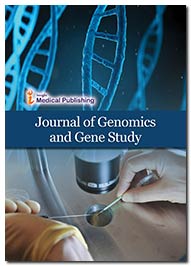A Cell Component-Related Prognostic Signature for Head and Neck Squamous Cell Carcinoma Based on the Tumor Microenvironment
Xiaoyun Qian*
Research Institute of Otolaryngology, China
Received Date: 2022-08-03 | Accepted Date: 2022-08-05 | Published Date: 2022-08-29
Abstract
Head and neck squamous cell carcinoma (HNSCC) is a heterogeneous disease with a high mortality rate. The tumor microenvironment (TME) is composed of numerous noncancerous cells that contribute to tumorigenesis and prediction of therapeutic effects. In this study, we aimed to develop a cell component-related prognostic model based on TME. We screened cell component enrichments from samples in The Cancer Genome Atlas (TCGA) HNSCC cohort using the xCell algorithm. Univariate Cox and multivariate Cox regression analyses were performed to establish an optimal independent risk model. The prognostic value of the model was further validated using Gene Expression Omnibus datasets. We found that patients in the low-risk group had a better outcome and activated immunity and may benefit more from the immune checkpoint inhibitor therapy. We also explored microRNAs (miRNAs) that may regulate these identified cell components, and 11 miRNA expression levels influenced the overall survival time. Moreover, their target mRNAs were differentially expressed in TCGA cohort and enriched in pathways of cell cycle pathways, extracellular matrix receptor interaction, human papillomavirus infection, and cancer. In summary, our cell component-related signature was a promising prognostic biomarker that provides new insights into the predictive value of nontumor components in the TME.
Open Access Journals
- Aquaculture & Veterinary Science
- Chemistry & Chemical Sciences
- Clinical Sciences
- Engineering
- General Science
- Genetics & Molecular Biology
- Health Care & Nursing
- Immunology & Microbiology
- Materials Science
- Mathematics & Physics
- Medical Sciences
- Neurology & Psychiatry
- Oncology & Cancer Science
- Pharmaceutical Sciences
